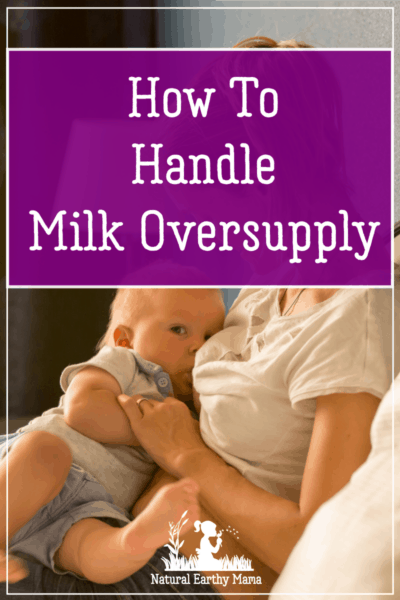 It takes a while for your body to adjust to nursing. Until you get to the optimum milk supply, your body can produce too much milk, especially in the early days of nursing. The supply usually self-corrects, but not for all. If you are dealing with milk oversupply, keep reading to find out what you can do about it.
It takes a while for your body to adjust to nursing. Until you get to the optimum milk supply, your body can produce too much milk, especially in the early days of nursing. The supply usually self-corrects, but not for all. If you are dealing with milk oversupply, keep reading to find out what you can do about it.
How To Tell If You Have Milk Oversupply
It’s easy to confuse oversupply for breast engorgement or let down reflex. Here are a few signs to help you tell if you have milk oversupply.
Please read: This information is provided for educational purposes only and is not intended to treat, diagnose or prevent any disease. We encourage you to make your own health care decisions in partnership with a qualified health care professional.
This post contains affiliate links, this means at no extra cost to you, we make a commission from sales. Please read
our Disclosure Statement
Leaking all the time
Leaking breasts are not always a sign that you have an oversupply. Sometimes your body needs time to adjust. However, if you are leaking all the time, it’s a sign your milk production is in overdrive.
If it seems like you have to change your breast pad every hour. Or maybe you wake up with a wet shirt every time you take a nap, it might be you have milk oversupply.
Super sore breasts
One of the best things about breastfeeding is probably full breasts. (They look good, don’t they) But when they go from firm to full to horribly sore, it doesn’t feel so good. If this happens to you all the time, it’s a signal that you are producing too much milk.
If your breasts feel full even after a feed, it might mean your breasts are filling up faster than they should.
Green poop with foam-like stuff
Poop patrol is just another one of the wonderful joys of motherhood. It’s always worrisome if the baby doesn’t have the normal brownish poo you’d expect for breastfeeding babies.
If you notice consistent green poo that looks a bit foamy, it could be a sign of oversupply. That’s because your baby will not be getting enough hindmilk.
The baby is fussy all the time.
Your baby may be struggling to keep up with the milk and end up taking in too much air. That may cause the little one to be very uncomfortable and colicky.
Your child may even refuse to feed when they can’t deal with excessive supply. In some cases, they will feed more often because the foremilk doesn’t satisfy hunger.
A million different things can cause a baby’s crankiness. So on its own, fussiness is not a sign of overproduction of milk.
But if your little one is unsettled and you have a few other symptoms mentioned, it probably means you are producing too much milk.
Bubba chokes while feeding
It’s amazing how babies are born just knowing how to feed. But in the early days, there will be some choking episodes as you both adjust to breastfeeding.
However, if you’ve been breastfeeding for a few months and your baby still chokes all the time, it could be a sign of oversupply.
NOTE: These signs will help point you in the right direction. They are not intended as a diagnosis. So it’s best to see your doctor or breastfeeding expert for an accurate diagnosis.
Isn’t Oversupply A Good Thing?
Too much milk is good, right? It means more food for the baby, so what’s the big deal?
Well, too much of a good thing can be harmful. That’s precisely what happens when you have too much milk.
The baby might seem to be gaining weight (a little too much), but they’ll be very irritable. On top of that, the little one will choke and have a hard time feeding, which can be stressful for both of you. Moreover, your infant may get lots of nappy rashes from way too much wee— discomfort all around.
And as if watching your baby in so much discomfort is not enough, you’ll have to deal with a whole lot yourself, like leaking breasts and painful engorgement. Also, your breast ducts may get blocked, leading to mastitis.
So it’s not a good thing at all.
Managing Breast Milk OverSupply
Sometimes the best you can do is manage the situation; here are a few tips to help.
Avoid using a dummy
When your milk production is overboard, try not to use a dummy. Why? That’s because alternative nipples can reduce your child’s nursing frequency, which makes the problem worse.
He won’t feed as much, leaving you with heavily engorged breasts all the time. Instead of a dummy, try to feed more often.
Lay down when nursing
If you have milk oversupply problems, it’s a good idea to use lying-down breastfeeding positions. This doesn’t reduce the volume of milk. However, it does allow your baby to set the pace at which he feeds.
That way, your little one won’t be overwhelmed. What’s more, it will be easier for the baby to take a break by simply lifting the head, so there’s less spluttering and choking.
You can lie backward and have your baby’s head and throat above the nipple. Or you can lie on your side. That way, the baby can let some milk out through the side of his mouth when it gets too much. Remember to put a towel!
Hand pump
When your breasts are incredibly sore, try a little hand pump to relieve a bit of the pressure—only just a little. If you do too much, you’ll make it worse. That’s because your breasts will take it as a signal to produce more milk. Try not to use a pump, or you could end up overdoing it.
Use breast pads
Uncontrollable leaking can be embarrassing. To stop the stains on your shirt, use pads inside your bra to catch the milk. It won’t stop the milk, but at least you can move around with more confidence.
Let your baby lead
Don’t try to control the feeding process; let your baby latch and release at will. All you have to do is support your little one. Also, keep a towel ready to catch the milk splatters.
Reducing Milk Supply
Here are some of the things you can do to help reduce your milk supply:
Block feeding
Block feeding refers to a technique where you nurse the baby in “blocks.” This means you feed your baby from one breast only every few hours. Each time block will depend on your situation but can be anything from 3 hours or more.
You will only switch breasts after each block interval. The breast that’s not being suckled will fill up; therefore, signaling the milk production hormones to stop more production.
After the block period, you switch and repeat the process on the other side. You can try this for 24 hours. At this point, both your breasts should reduce the amount they produce.
If you don’t feel any difference after the first 24 hours, you can try again for a few more days. But this time, increase the intervals. For example, if you did 4 hours the first time, try increasing it to 6 hours.
You shouldn’t stop feeding your baby. Keep feeding as you usually would. Simply use one side instead of switching. Remember to consult with a breastfeeding expert or your doctor before you decide to try this.
Drain and block
If you try block feeding and still don’t see any change, you can add a twist. With the drain and block technique, you drain your breast first using a pump. After you’ve finished pumping, you feed your baby from the same breast.
You continue feeding in blocks. That means using the same breasts that you’ve pumped to feed for that time block.
How does that help? Emptying your breast allows it to drain faster and sends the signal that it does not need more milk.
Also, your baby gets to drink the more nutritious hindmilk. You should see a change in your baby’s stool after a few days if it’s working.
How To Prevent Oversupply
When you start breastfeeding, hormones control the milk your breasts produce. After a few months, hormones don’t control supply anymore.
Instead, it’s the amount of milk left in your breasts that triggers production. If your hormones are off base right from the beginning, it could be more challenging for your body to regulate later.
Other times, however, you can trigger milk oversupply without even knowing it. When you have a new baby, you might be a bit anxious about making sure you have enough to feed them.
You may even express lots of milk to freeze for when you are not there. So you’ll inadvertently trigger your body to produce way too much milk. Try to avoid this.
As a new mom, you probably get lots of advice, including teas and herbs, to stimulate milk production. Avoid these unless you have low milk production. Most times, your body will work it out on its own.
To Sum It Up
Milk oversupply is an unpleasant experience for both you and your baby. Try these tips to help deal with it. Remember, everyone is different. That’s why you should consult a breastfeeding expert or your physician to diagnose your problem before you try anything.
